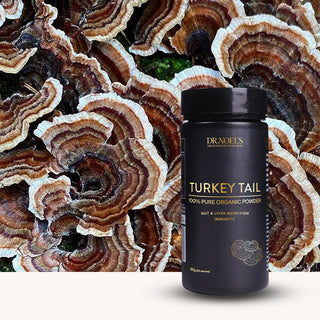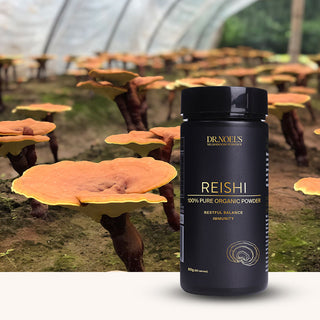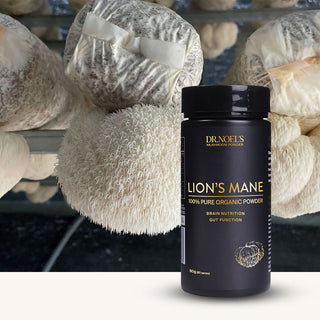
Ganoderma lucidum, a species of fungi belonging to the Polyporaceae family, is recognised for its therapeutic potential. Among the approximately 250 species of Polyporaceae globally, over 100 are found in China across 29 provinces, with research focusing primarily on Ganoderma lucidum (red reishi) and Ganoderma sinense (black reishi). Traditional Chinese medicine, as documented in classics like the Shen Nong’s Materia Medica and Compendium of Materia Medica, regards Ganoderma as a top-grade herb with benefits such as boosting vitality, strengthening the body, and promoting longevity.
Modern research has revealed Ganoderma’s potential in delaying the progression of atherosclerosis (AS), lowering blood lipids, and reducing blood pressure, indicating its preventive and therapeutic potential against CVD. This article reviews the mechanisms of Ganoderma in managing CVD, aiming to promote further research and clinical applications.
1. Anti-Atherosclerosis Effects
1.1 Antioxidant Stress
Endothelial dysfunction, an early indicator of AS, is linked to oxidative stress and dysfunction in perivascular adipose tissue (PVAT). Ganoderma polysaccharides can lower reactive oxygen species (ROS) levels, reduce oxidative stress, and decrease foam cell formation, thereby mitigating AS progression. Research also demonstrates that Ganoderma triterpenes counteract ROS accumulation, alleviating cellular damage and AS lesions.
1.2 Anti-Inflammatory Action
Chronic inflammation is a significant trigger of AS. Ganoderma polysaccharides suppress inflammatory factors such as LOX-1, TNF-α, and ICAM-1, disrupting the TLR4/MyD88/NF-κB pathway and reducing vascular inflammatory damage. Moreover, Ganoderma triterpenes regulate macrophage polarisation, inhibiting inflammation and foam cell formation, thereby slowing AS progression.
1.3 Cholesterol Regulation
Ganoderma triterpenes enhance liver X receptor-alpha (LXRα) expression, promoting reverse cholesterol transport and reducing foam cell formation. Additionally, Ganoderma spore powder mitigates vascular calcification by regulating cholesterol efflux and inhibiting osteogenic pathways in vascular smooth muscle cells. Compared to synthetic antioxidants, Ganoderma offers safer, more effective strategies for AS treatment.
2. Lipid-Lowering Effects
Ganoderma polysaccharides exhibit lipid-lowering effects by reducing malondialdehyde (MDA) levels, enhancing antioxidant enzyme systems, and improving cholesterol metabolism. They activate the Nrf2-Keap1 pathway, suppress NF-κB signalling, and promote cholesterol efflux via ABCA1/ABCG1 pathways. Furthermore, Ganoderma polysaccharides influence gut microbiota, enhancing the production of short-chain fatty acids (SCFAs), which improve lipid profiles.
3. Blood Pressure Regulation
Hypertension is a critical risk factor for CVD. Ganoderma triterpenes upregulate nitric oxide synthase (NOS) gene expression, increasing nitric oxide (NO) production and reducing endothelin-1 (ET-1) levels. By activating the eNOS/NO/cGMP pathway, Ganoderma alleviates vascular smooth muscle contraction and oxidative stress, maintaining blood pressure balance.
4. Protection Against Myocardial Damage
Ganoderma polysaccharides mitigate myocardial damage caused by ischemia-reperfusion injury, calcium overload, and mitochondrial dysfunction. Studies show that Ganoderma extracts reduce oxidative stress, stabilise mitochondrial membrane potential, and inhibit apoptosis-related pathways, thereby protecting cardiac tissue. Furthermore, Ganoderma spore powder reduces inflammatory cytokines such as TNF-α and IL-6, preventing myocardial cell apoptosis.
5. Additional Cardiovascular Benefits
Ganoderma interventions show promise in addressing heart failure, myocardial hypertrophy, and ischemic heart disease. Mechanisms include activating SIRT1 to regulate inflammation and apoptosis, modulating gut microbiota, and enhancing mitochondrial function. Recent innovations, such as Ganoderma spore oil nano-delivery systems, highlight its potential in combating radiation-induced cardiac dysfunction.
6. Clinical Applications
Clinical studies support Ganoderma’s role in improving CVD symptoms. For instance, a double-blind trial involving coronary heart disease patients reported significant symptom relief and blood pressure reduction after 12 weeks of Ganoderma polysaccharide treatment. Other studies demonstrate Ganoderma’s efficacy in managing hypertension, hyperlipidemia, and myocardial ischemia.
Conclusion
Ganoderma lucidum plays a significant role in preventing and treating cardiovascular diseases. Through mechanisms such as reducing oxidative stress, modulating inflammatory pathways, and maintaining cholesterol balance, Ganoderma offers a safer alternative to synthetic treatments. While clinical results are promising, further large-scale studies are needed to validate its effectiveness and optimise dosing strategies. As a natural remedy with substantial therapeutic potential, Ganoderma is poised to become a key player in the fight against cardiovascular diseases.





